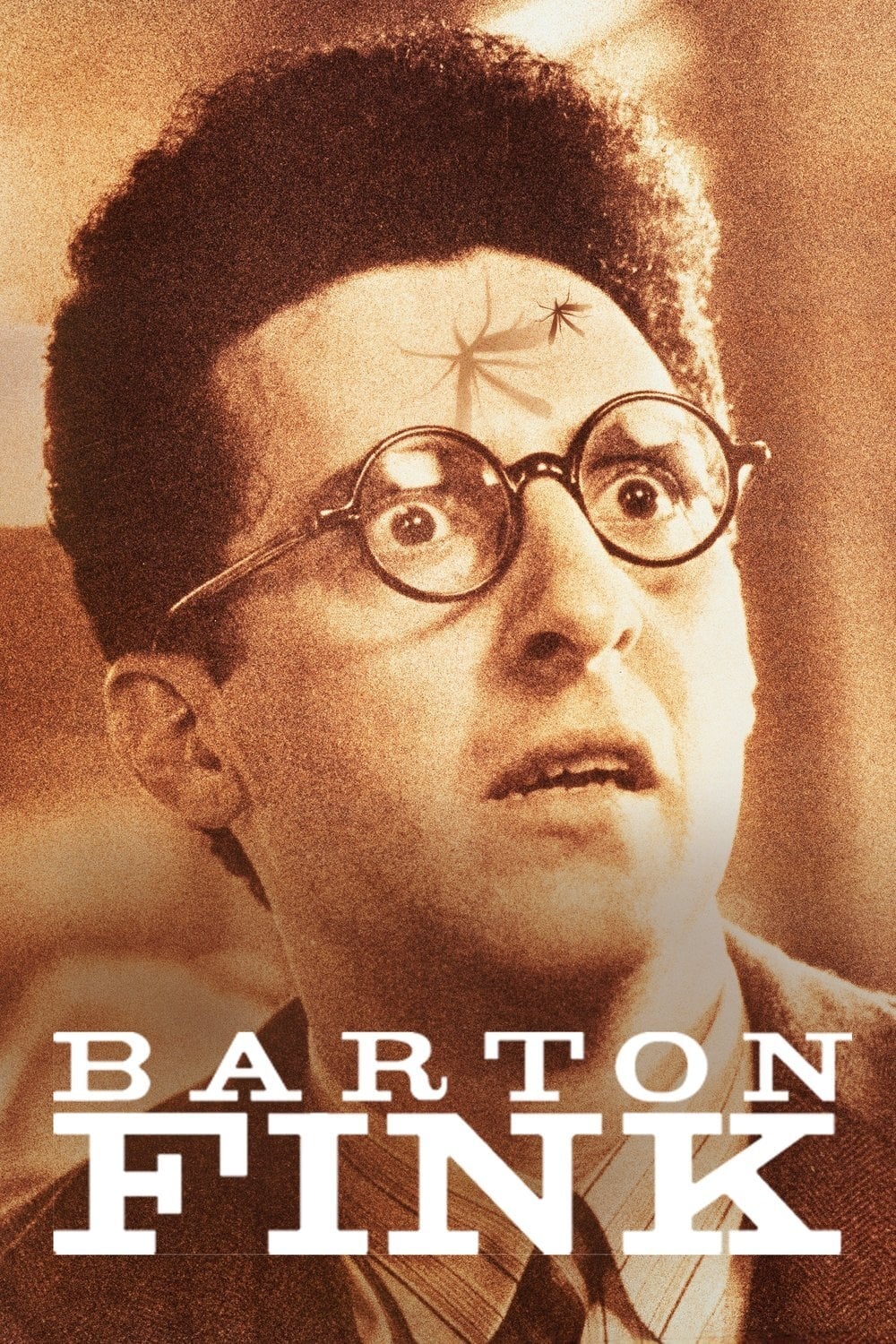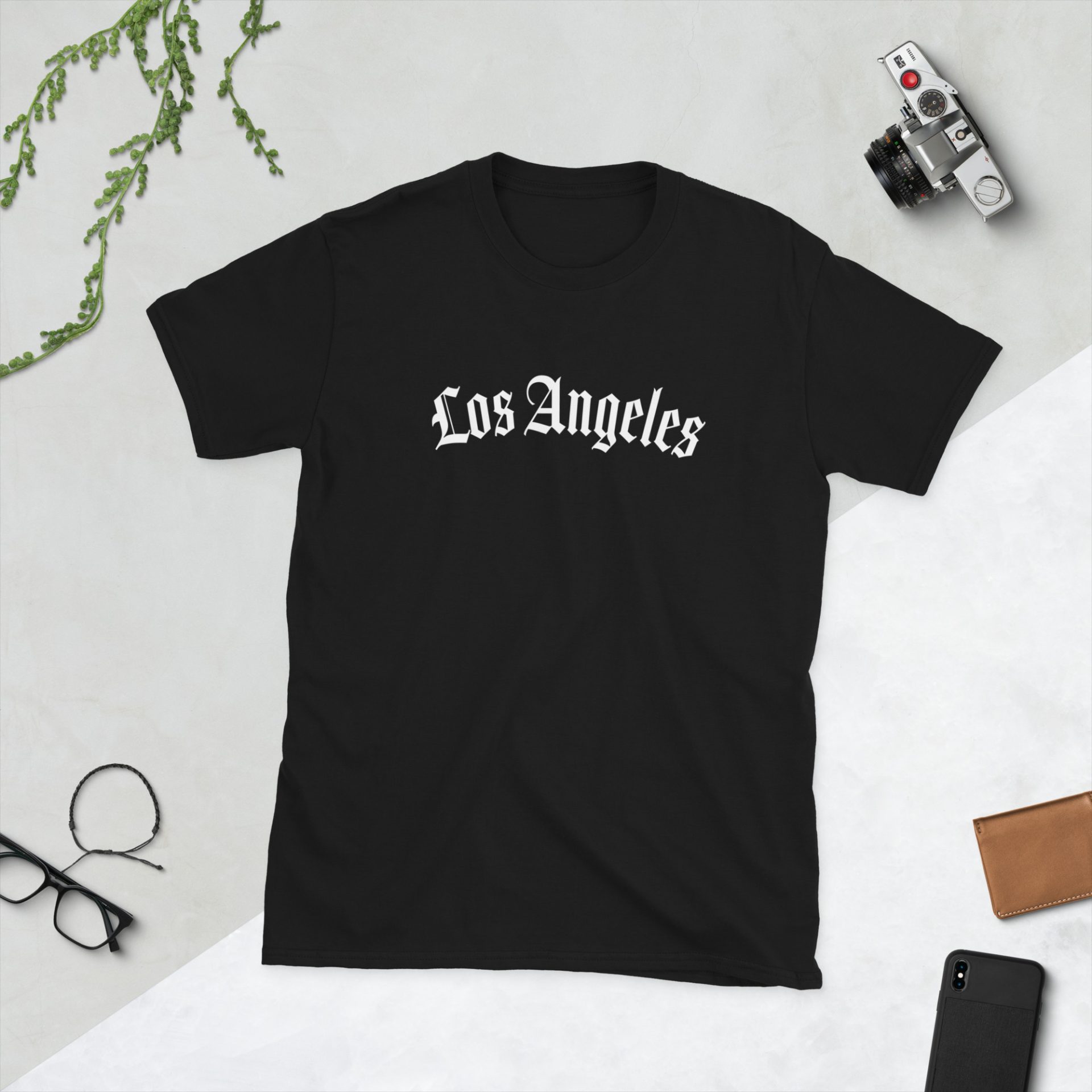Spoilers:
- Charlie is a serial killer.
- Audrey is found dead in bed.
- The hotel is a vision of hell.
- The box might contain a head.
- Barton gets stuck writing a screenplay.
- Charlie helps Barton with his writing.
- The studio bosses hate Barton’s script.
- Barton’s play gets largely ignored.
Barton Fink: Statistics Overview
Director: Joel Coen
Writers: Joel Coen, Ethan Coen
Release Date: August 21, 1991 (USA)
Key Statistics
- Budget: $9 million
- Box Office: $6.2 million
- Running Time: 116 minutes
- Genre: Drama, Thriller, Comedy
- Production Companies: Circle Films, 20th Century Fox
Awards
- Cannes Film Festival: Palme d’Or, Best Director (Joel Coen), Best Actor (John Turturro)
- Nominated: Academy Awards for Art Direction, Costume Design
Cast
- John Turturro: Barton Fink
- John Goodman: Charlie Meadows
- Judy Davis: Audrey Taylor
- Michael Lerner: Jack Lipnick
Critical Reception
- Rotten Tomatoes: 90% (Critics)
- Metacritic: 69/100
“Barton Fink,” directed by the Coen Brothers, is an enigmatic narrative of pertinent depth that serves as a profound exploration of an artist’s creative struggle. The protagonist Barton is an embodiment of the idealistic writer grappling with a world that stifrends creativity, a paradoxical Hollywood of the 1940s. This critique of the film industry’s commercial crudity is brilliantly presented, exploiting themes of artistic isolation and integrity interlaced with psychological disquiet. The Coen brothers’ directorial ingenuity transforms Barton’s descent into artistic blockage into a vicarious journey pulsating with dread and uncertainty. The narrative is meticulously curated, seeping with elements of satire, symbolisms, and elaborate allegories, thereby offering an insightful comprehension of the friction between art’s purity and the exposition of commercial success. The film’s emotional underlayer unravels the human psyche’s intricacies, skillfully stirring a range of feelings — from discomfort to empathy, from dread to sadness. At once provocative and introspective, it contemplates the paradox of an artist’s solitude in a world obsessed with communication yet uncommunicative itself. “Barton Fink” feels intrinsically Coen, blending elements of noir, surrealism, and dark humor, elegantly executed through John Turturro’s captivating performance, Roger Deakins’ mesmerizing cinematography, and Carter Burwell’s haunting score.In conclusion, with “Barton Fink” the Coen Brothers have mastered the art of storytelling, not just for sheer entertainment, but as a means of introspective analysis, challenging the boundaries of conventional narratives. It’s a compelling and haunting masterwork, a darkly comedic psychological thriller gripped with existential themes, profoundly sagacious in its portrayal of a writer’s labyrinthine struggle for creative autonomy. The movie is an exquisite paradox, stimulating and baffling, establishing itself as an eloquent examination of the human condition, isolation, and the echoing void between art and commerce.
Introduction to Barton Fink
Barton Fink is a 1991 film by the Coen Brothers, known for its quirky narrative and unique approach to storytelling. The film stars John Turturro as Barton Fink, a playwright struggling with writer’s block in Hollywood, and John Goodman as Charlie Meadows, his enigmatic neighbor. The film is notable for its exploration of themes such as creative frustration and the dark underbelly of Hollywood.
Interesting Facts
- Barton Fink was written during a writer’s block period the Coens experienced while working on another film, “Miller’s Crossing.”
- The film won three major awards at the 1991 Cannes Film Festival: Palme d’Or, Best Director, and Best Actor for Turturro.
- It was the first movie to win all three of these prestigious awards at Cannes in the same year.
Known Speculation
The movie is often speculated to symbolically represent the tensions between art and commerce. Some speculate that the fiery climax is an allegorical critique of Hollywood’s exploitation. There is also ongoing debate about the film’s ending and what it might suggest about Fink’s career and mental state.
Bizarre Elements
- The film’s setting and surreal tone blur the lines between reality and imagination, creating a peculiar atmosphere.
- Charlie Meadows’ character takes a violent turn, adding to the unsettling nature of the story.
- The appearance of the peeling wallpaper and the constant buzzing of mosquitoes contribute to its eerie ambiance.
Public Perception Over Time
Initial reviews were mixed, with some critics praising its originality while others found it perplexing. Over time, its reputation has shifted more positively, viewed as a cult classic. Its complexity and richness in symbolism have made it a subject of analysis and discussion among film enthusiasts.
Barton Fink: A Snappy Beat-By-Beat Breakdown
1. Bright Lights, Big City: Barton Fink hits the big time, lands a Hollywood gig. Little does he know, it’s not all sunshine and rainbows.
2. Hotel Hell: Enter the eerie Hotel Earle. It’s less of a haven, more of a nightmare. Cue the unsettling vibes.
3. Writer’s Block Woes: Our guy can write a play in his sleep, but a wrestling flick? Barton’s brain hits a brick wall.
4. Neighborly Nuisance: Good old Charlie, the overly friendly next-door neighbor with a looming dark side. Red flags much?
5. Hollywood Hustle: Studio execs breathing down his neck, Barton’s feeling the pressure. Hollywood’s not what he signed up for.
6. Mysterious Muse: Mayhew’s secretary, Audrey, tries to help Barton break the block. Spoiler: It’s complicated.
7. Midnight Madness: Audrey and Barton’s night of illicit inspiration turns into a bloody mess. Literally.
8. Disappearing Acts: Audrey’s gone without a trace, and Barton’s clueless. Cue frantic search and spiraling sanity.
9. Unraveling Realities: Barbwire headaches, ear-piercing screams, Barton’s reality crumbles. What’s real? What’s not?
10. Charlie’s Chaos: The truth about Charlie hits like a freight train. Spoiler: It’s not neighborly love.
11. Harrowing Escape: Fire, fury, and a desperate flee from the Hotel Earle. Barton’s Hollywood trip from hell reaches its peak.
12. Bittersweet Script: Barton finally writes something… That the studio can’t use. Irony at its finest.
13. Beach Bumming with a Box: End scene with Barton on the beach, box in tow, puzzling over life, art, and everything in between. Cue existential crisis.

Barton Fink: A Direct Breakdown
Story Opening
The film opens with Barton Fink in 1941 New York City, a screenwriter who is stuck in his pretentiousness. The atmosphere is claustrophobic, showcasing his struggles. We see his world filled with surrealism and disillusionment. The visuals set the stage for a deep dive into his psyche.
Story Formula Breakdown
- Setup: Barton is introduced as an idealistic playwright wanting to write about the common man.
- Inciting Incident: He moves to Hollywood to write for the movies, meeting various industry characters.
- Conflict: He struggles to find inspiration, faces writer’s block, and deals with the jarring difference between high art and lowbrow entertainment.
- Climax: His mental state deteriorates as he grapples with external pressures and inner demons, leading to a tragic confrontation.
- Resolution: The story concludes ambiguously, leaving Barton’s fate and sanity open to interpretation.
Character vs. Story Driven
The story leans more towards character-driven. It focuses on Barton’s psychological deterioration rather than a traditional plot. His internal conflicts, motivations, and existential crises take the forefront.
Memorable Characters
Barton’s memorability lies in his complexity. He embodies ambition, insecurity, and moral dilemmas. His struggle against the Hollywood machine and his own pretensions create a powerful resonance. The more he tries to connect with “the common man,” the more isolated he becomes.
Main Characters Brief Description
- Barton Fink: A New York playwright struggling to adapt to Hollywood. His idealism clashes with the film industry’s cynicism.
- Charlie Meadows: A mysterious, seemingly simple man who becomes Barton’s unlikely friend, revealing deeper themes of identity and paranoia.
- W.P. Mayhew: A successful screenwriter representing the tension between artistic integrity and commercial success.
- Audrey Taylor: A femme fatale, symbolizing the dangers of desire and distraction in Barton’s life.
- Studio Executives: They represent the impersonal, ruthless nature of the Hollywood system, pushing Barton toward self-doubt.
Template for Writing Story Flow
- Opening Scene: Introduce the protagonist’s world and central conflict.
- Inciting Incident: Present a significant challenge or opportunity that pushes the protagonist into a new environment.
- Character Development: Flesh out inner conflicts and motivations through interactions with supporting characters.
- Rising Action: Highlight escalating tensions, including failures, distractions, and setbacks.
- Climax: Create a peak moment of confrontation, revealing true character and choices.
- Falling Action: Show the aftermath and consequences of the climax; how does the character change?
- Resolution: End with ambiguity or clarity. What is the final takeaway for the protagonist and the audience?
Simple Terms: What is the Story About?
“Barton Fink” is fundamentally about a man trying to find his voice in a world that doesn’t care about it. It questions the nature of art, identity, and the monstrous side of Hollywood. Through Barton’s journey, the film explores themes of alienation and the struggle for authenticity.
Critical Analysis of Themes
The film showcases a clear critique of Hollywood’s impact on creativity. Barton, caught between his ideals and the commercial machine, reflects the struggles of many artists. The themes of existential dread are prevalent. The film urges a reflection on the cost of art and what one sacrifices in the pursuit of authenticity.
Writing Style and Cinematic Techniques
The Coen Brothers use distinct visual storytelling. The cramped hotel room symbolizes Barton’s mental state. Long takes and tight framing build tension. The dialogue is sharp and loaded with subtext, revealing characters’ motivations. These techniques emphasize the oppressive nature of his environment and enhance the character-driven narrative.
Symbolism and Visual Motifs
Recurring images like the typewriter and the hotel connect to Barton’s creative struggle. The typewriter becomes a symbol of his artistic voice, which he seeks to claim. The hotel itself feels like a character, enforcing isolation and confusion.
Emotional Impact and Reception
The film’s emotional journey resonates with many. Audiences feel Barton’s frustration, confusion, and eventual breakdown. The unsettling atmosphere, combined with dark humor, lingers long after viewing. Critics praised its unique style, but some found it too abstract. Nevertheless, it’s a film that sparks discussion about the nature of storytelling.
Influence and Legacy
“Barton Fink” has influenced various filmmakers and writers. Its rich themes remain relevant, reminding artists of the challenges they face in maintaining integrity amid commercial demands. The film’s legacy is cemented as an essential critique of Hollywood’s narrative.
Conclusion of Analysis
This analysis of “Barton Fink” unpacks its complex character study, highlighting how personal and external challenges shape the narrative. Through Barton’s eyes, we witness the often harsh reality of creative pursuit and the haunting questions that arise within the world of art.
Inciting Incident
The inciting incident in “Barton Fink” is when Barton arrives in Los Angeles to work on a Hollywood screenplay. He’s immediately confronted with the stark contrast between his idealistic vision of writing and the commercial reality of Hollywood. This sets off his internal struggle.
Symbolically, this moment represents the clash between art and commerce. Barton believes in the power of storytelling, but the environment he’s in is focused on profitability. His struggle to adapt symbolizes the battle many artists face when entering the industry.
Act Structure
The film follows a three-act structure:
- Act 1:
Barton arrives in LA, meets studio executives, and struggles with his writer’s block. We see his idealism and naivety. Key scenes include his interactions with Charlie and the producers who think he’s an eccentric but promising talent.
- Act 2:
This act heightens Barton’s frustrations. He interacts with his neighbor Charlie, who has a darker side. Barton is forced to confront his own identity and the type of writer he truly wants to be. The act is filled with tension as Barton’s block worsens and he delves deeper into the twisted nature of Hollywood.
- Act 3:
Barton finally faces the consequences of his choices. The climax leads to a scandal and tragic events that push him to the edge. The resolution sees Barton coming to a haunting realization about himself and his profession.
Climax
The climax occurs when Barton’s world collapses after a series of shocking events, including a murder connected to Charlie. This moment is rich with emotional capital; it represents Barton’s ultimate failure and the destruction of his artistic integrity.
The build-up includes Barton’s increasing disillusionment and unraveling psyche, leading to a chilling confrontation with the realities of Hollywood. His idealism is met with chaos, illustrating the dark side of his aspirations.
Tension and Release
The movie builds tension through Barton’s increasing isolation, surreal encounters, and escalating absurdity. Each scene layers more pressure, with ambiguous dialogues and unsettling aesthetics that leave viewers on edge.
Release comes in the form of shocking plot twists and revelations. When tensions seem unbearable, a new twist forces Barton’s hand, leading to moments of clarity amidst chaos. The release is not comforting; it’s jarring, reflecting the unpredictability of life as a writer.

Understanding the Ending of Barton Fink
The ending of “Barton Fink” leaves viewers with a strong impression. Barton’s journey comes full circle when he realizes that he is trapped in his own mind and environment. After a mysterious fire at the hotel and confronting a brutal truth, he finds himself in a dark room, staring down at a typewriter. It suggests that his creative aspirations might be futile.
How Writers Categorize the Ending
Writers might classify the ending as ambiguous and unsettling. It challenges traditional narrative structure and leaves questions unanswered, reflecting chaos and the struggle of the artistic process.
Symbolic and Thematic Meanings
- Isolation: Barton’s isolation grows as he struggles with his identity and purpose.
- Failure: The fire can symbolize Barton’s failure as a writer and the destruction of his idealism.
- Hollywood Reality: The contrast between Barton’s lofty ideas and Hollywood’s gritty reality highlights the complexity of creativity.
- Identity Loss: Barton ultimately loses who he is in his pursuit, suggesting a cautionary tale about artistic obsession.
Loose Ends and Payoffs
The ending resolves several loose ends, like Barton’s struggles with writer’s block and the disturbing reality of those around him. The connection between Barton and Charlie, the violent character, provides a chilling resolution about the nature of creativity and destruction.
Character Changes by the End
Barton becomes more disillusioned. He starts as a confident writer but loses his sense of self. His experiences expose him to the darker side of his ambitions, reshaping his worldview.
What Writers Can Learn
Writers can learn about the importance of staying true to oneself amidst external pressures. The ending serves as a lesson on the dangers of losing one’s identity in the pursuit of success. It highlights the notion that not every story needs a neat ending; chaos and ambiguity can also convey deep truths about the human experience.
Dialogue Style in Barton Fink
The dialogue in “Barton Fink” is sharp, often laden with irony, and serves to reveal character motivations and themes. It toggles between sharp wit and uncomfortable tension, reflecting the chaos of Hollywood and the struggles of the main character, Barton Fink.
Quintessential Character Moment
A standout moment occurs when Barton meets with Charlie, the insurance salesman. Their conversation about writing and authenticity reveals Barton’s idealism versus Charlie’s pragmatism. This clash exemplifies Barton’s inner conflict throughout the film.
Iconic Lines
- “I’m a writer, not a writer’s writer.” – Barton Fink
- “I’m gonna make a scary movie!” – Charlie
- “You’re a writer? Why don’t you write?” – Charlie
Uniqueness of the Dialogue
The dialogue is unique due to its blend of surrealism and reality. Lines often have a rhythm, making them feel like poetry while still sounding like real conversations. It creates an atmosphere that is both engaging and unsettling.
Dialogue Density
The script is heavy on dialogue. Conversations drive the narrative, allowing character exploration. Each exchange is packed with subtext.
Realism
The realism varies. While some lines feel authentic, others showcase exaggerated character quirks. This blend creates a stylized version of reality, fitting the film’s themes.
Lessons for Writers
- Subtext is key. Characters often mean more than they say.
- Contrast character perspectives through dialogue.
- Use rhythm and repetition to enhance emotional impact.
Scene Breakdown
Consider the scene where Barton first talks to Charlie in the hotel lobby. The dialogue is punchy. Charlie’s brashness contrasts with Barton’s naivety. Charlie says, “Tell me, what do you write?” Barton stumbles, showcasing his self-doubt. This establishes character dynamic. The rhythm shifts as Charlie grows more animated, revealing the tension and pressure Barton faces.
Their back-and-forth highlights a core theme: the struggle between artistic integrity and commercial demands. Each line serves a purpose, propelling character development and thematic exploration. This is how dialogue compels the audience and reflects the film’s deeper conflict.
Barton Fink
Writer in a room, ink stains on fingers, no epiphany, just fumes. The clamor of typing, a cacophony of waiting.
Hollywood dreams, slipping through the cracks, as the walls close in, the voices mingle— laughter in the dark.
Fink’s muse, a specter, whispers of ambition, yet fear shakes the script, like a ghost, it drifts, ungraspable, unseen.
The struggle is real, what is art, if not a wrestle? Idea to paper, a Sisyphean push.
- Isolation sings,
- And the hotel room hums,
- With the weight of words.
Actors parade, shallow smiles shine, beneath layers of sheen, Fink, they say, lost in a labyrinth.
Yet the story begs: Is it freedom? when shackled to dreams, that flicker and fade? An endless loop—
Stuck with Fink, dine on despair, the chaos remains, a silent applause, echoing through time.
Unique Writing Lessons from Barton Fink
-
Create Characters from Conflicts: Fink’s struggles are rooted in his ideals clashing with the reality of Hollywood. Build characters whose desires directly oppose their environments.
-
Explore the Unseen Struggles: The film doesn’t just focus on Fink’s writing but his mental breakdown and alienation. Show the internal battles of your characters, not just the external actions.
-
Setting as a Character: The Hotel Earle is oppressive and claustrophobic, reflecting Fink’s mental state. Use setting to enhance emotional resonance in your stories.
-
Absurdity can Reveal Truth: The bizarre events of Fink’s life mirror the absurdity of creative processes. Embrace the unexpected to convey deeper truths.
-
Futility of Idealism: Fink’s idealistic views are constantly undercut. Acknowledge that not all creative endeavors will align with personal beliefs.
-
Dialogue as a Tool for Subtext: Conversations often reveal more than spoken words. Use dialogue to suggest hidden meanings and character motivations.
-
Isolation Breeds Creativity: Fink’s solitude impacts his writing. Explore how isolation, whether physical or emotional, influences creativity in your characters.
-
Writing is a Grind: The film emphasizes the tedious nature of writing over glamorized inspiration. Don’t shy away from showcasing the effort behind creativity.
-
Interplay Between Personal and Professional: Fink’s personal life seeps into his work. Show how experiences shape creative output.
-
Embrace Dark Comedy: The mix of humor and horror shows complexities of life. Use dark comedy to reflect real-world struggles creatively.
Joel and Ethan Coen: A Brief Discography
The Coen Brothers, Joel and Ethan, are known for their distinctive film style and storytelling. Below is a selection of notable works:
- Blood Simple (1984) – Their debut feature film that set the tone for their unique approach to storytelling.
- Raising Arizona (1987) – A quirky comedy about a couple who kidnap a baby, blending humor and a crime narrative.
- Fargo (1996) – A dark comedy/crime film that won two Academy Awards and became a cultural touchstone.
- The Big Lebowski (1998) – A cult classic, mixing comedy and mystery with eccentric characters.
- O Brother, Where Art Thou? (2000) – A musical comedy inspired by Homer’s “Odyssey,” set in the Deep South.
- No Country for Old Men (2007) – A gritty crime thriller that won four Academy Awards, showcasing their dramatic storytelling.
- Inside Llewyn Davis (2013) – A character study of a folk musician struggling in the 1960s New York music scene.
- Hail, Caesar! (2016) – A comedic homage to Hollywood’s Golden Age, with a focus on the industry’s quirks.
Writing Style
The Coen Brothers’ writing style is marked by sharp dialogue, dark humor, and a blend of genres that often subverts traditional storytelling conventions.
Review 1:”The Coen Brothers’ 1991 Palme d’Or-winning surreal masterpiece, Barton Fink, is as inscrutable, yet fascinating, as they come – spinning the tale of an everyman’s journey into the mouth of hell, painted over the backdrop of the Golden Age of Hollywood in the 1940s.”Source: https://www.empireonline.com/movies/reviews/barton-fink-review/Review 2:”Despite its hilarious moments and sharp put-downs of Hollywood, “Barton Fink” is about the isolation of the artist and the tug-of-war between his commitment to his work and the demands (and rewards) of the grotesque and lugubrious commercial world.”Source: https://variety.com/1990/film/festivals/barton-fink-1200428795/Review 3:”Barton Fink is a triumphant black comedy about the death of the writer and the chaos of the mind. It presents, then, a mature, funny, eccentrically personal view of America that may not be as fashionable as Platoon but is just as serious and significantly more original.”Source: https://www.theguardian.com/culture/1991/sep/22/filmoftheweek.filmandtv1Review 4:”Barton Fink, which unfolds with the logic of a dream, explores the strange and towering city of darkness, guilt, and denial that is not Hollywood but the soul of the title character.”Source: https://www.rogerebert.com/reviews/barton-fink-1991Review 5:“Barton Fink” offers wit, terror, an array of memorable characters – the Coens’ stock in trade. But as a statement about the difficulty that comes from creating something original, something of personal value, and then seeing those values subverted and ruined by corporate interests, it is one of the brothers’ most powerful works.”Source: https://www.forcesofgeek.com/2011/09/from-pages-of-barton-fink.html
- Barton Fink – Wikipedia
- Barton Fink (1991) – IMDb
- Review/Film; ‘Barton Fink,’ a Dark Comedy From Joel and Ethan Coen
- ‘Barton Fink’: The Coen Brothers’ Meta Way of Dealing With Writer’s …
- Barton Fink (Joel and Ethan Coen, 1991) – Phipps Film
- Barton Fink (1991) – Movie Review : Alternate Ending
- Crass Consciousness (BARTON FINK) | Jonathan Rosenbaum
- “That “Barton Fink Feeling” and the Fiery Furnace” by Matt Stefon
- Barton Fink (1991) Dir. Joel & Ethan Coen – DP. Roger Deakins : r …
- Barton Fink : Sonic Cinema




Leave a Reply